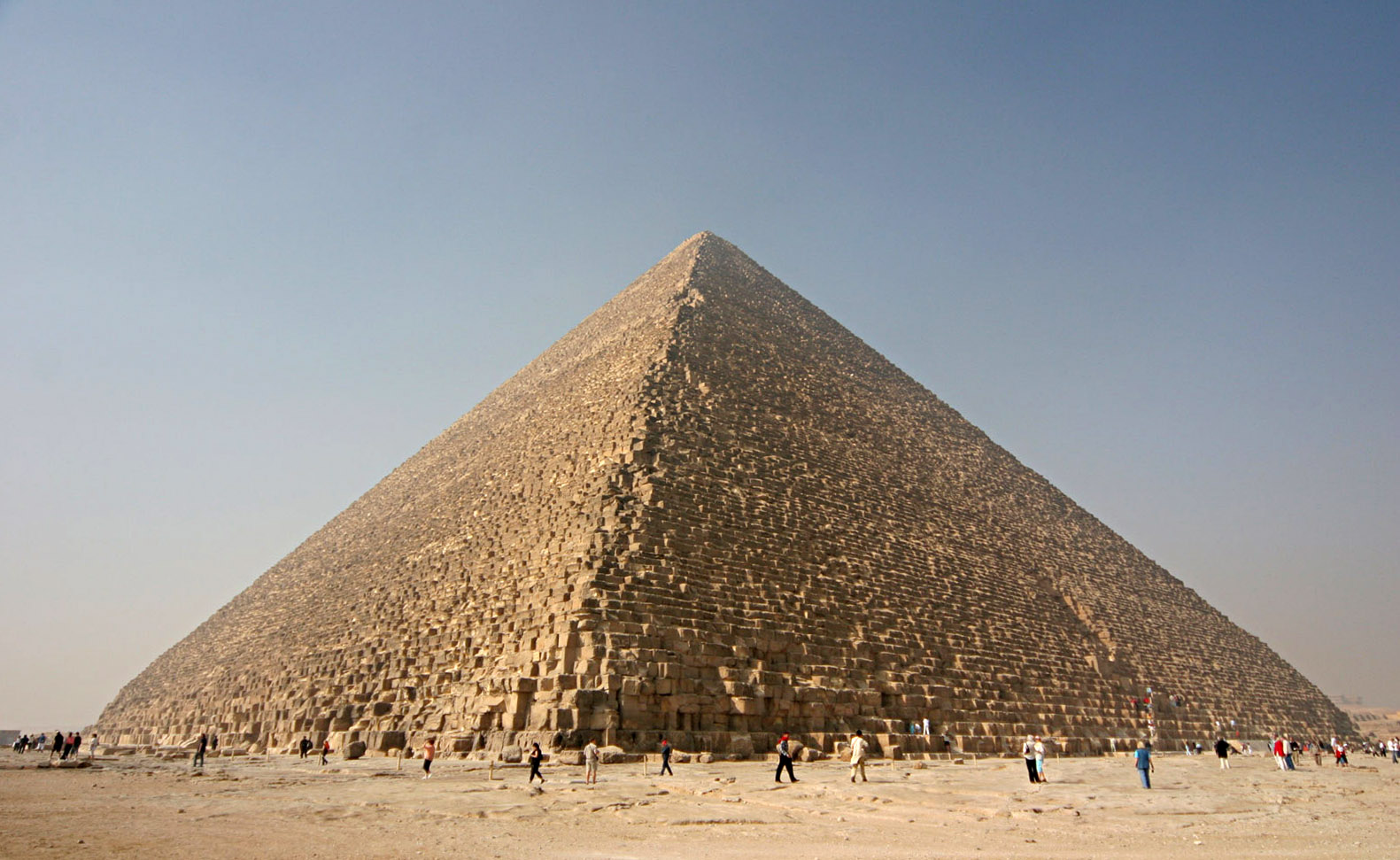A group of international archaeologists employed cutting-edge technology to discover a sealed-off room above the entryway to the Pyramid of Khufu. They anticipate finding more of these chambers in the future.
The discovery of a hidden chamber inside the 4,500-year-old Pyramid of Khufu, also known as the Pyramid of Cheops or the Great Pyramid of Giza, was recently made public by Egyptian antiquities authorities.
Archaeologist Zahi Hawass and Tourism Minister Ahmed Eissa announced the finding, which was credited to experts from the ScanPyramids project.
ScanPyramids, which began in 2015, is an international effort that studies structures using a variety of high-tech tools like as non-invasive infrared thermography, ultrasound, 3D models, and cosmic-ray radiography.
Scientists claim to have utilized that technique to discover a sealed-off passage above the pyramid’s main entrance. The corridor is nine meters (29.5 feet) long and two meters (6.5 feet) broad, and it is not accessible from the outside.
Following the finding, scientists slid a small diameter (6 millimeter: 1/4 inch) Japanese endoscope through a fissure between stones to obtain photographs of the space from within.
Mostafa Waziri, the head of Egypt’s Supreme Council of Antiquities, speculated that the tunnel was built to redistribute weight above the main entrance or around another yet-to-be-discovered chamber.
Christoph Grosse of the Technical University of Munich, a key member of the ScanPyramids project, expressed hope that more hidden truths may be discovered. “There are two large limestones at the end of the chamber,” he added of the freshly discovered passageway, “and now the question is what’s behind those stones and below the chamber?”
Artifacts from Ancient Egypt
Egypt has had several great archeological excavations, and the artifacts found from these discoveries are among the best-known in the world. Long before many countries formed, Egypt had a thriving culture. This civilization created some of the world’s most well-known buildings, sculptures, and works of art.
The Great Pyramids are three of Ancient Egypt’s most well-known artifacts. Giza is home to the Great Pyramids. These magnificent monuments were built by three successive rulers of Ancient Egypt’s Old Kingdom. The rulers, Khufu, Chefron, and Mycerinus, desired splendid tombs to house their bodies after death.
These pyramids housed incredible items that exemplified the best that Egyptian culture had to offer at the time. Other objects, such as furniture and jewelry, were sealed within the pyramids in addition to precious works of art. Unfortunately, servants were frequently sealed within the pyramids, ostensibly to serve the pharaoh in the afterlife.
Without including the famed King Tut, no study of Ancient Egyptian artifacts would be complete. When King Tutankhamun came to power in 1361 B.C., he was merely a youngster. One assumption is that he was assassinated as an adolescent because he died from a head wound, but no one knows for sure. Howard Carter, a British archeologist, uncovered King “Tut”‘s tomb in 1922. King Tutankhamun’s tomb included numerous magnificent objects, including jewels, furniture, and a famous gold mask.
The Great Sphinx is another Ancient Egyptian relic that still stands today. The Great Sphinx, which is linked to King Chephren’s pyramid, displays the Pharaoh’s face on the body of a lion. Experts think that the Great Sphinx was built to protect the burial grounds. This enormous structure stands 65 feet tall and 200 feet long. Despite the fact that time has worn away at the features, the Great Sphinx remains an extraordinary treasure from long ago.
The Rosetta Stone is a well-known and historically relevant item. This relic was discovered in 1799. The writing on this stone allowed the meaning of hieroglyphics to be translated. The Rosetta Stone is a granodiorite stele inscribed with three versions of a proclamation issued in Memphis, Egypt, in 196 BC on behalf of King Ptolemy V Epiphanes during the Ptolemaic dynasty. The top and middle texts are in hieroglyphic and Demotic scripts, respectively, and the bottom is in Ancient Greek. The decree differs very slightly between the three copies, making the Rosetta Stone essential for understanding Egyptian inscriptions. The text of the Rosetta Stone was translated in 1822. Scholars could then read hieroglyphics thanks to this translation.
Queen Nefertiti is remembered because of an artifact discovered in the home of a sculptor. Queen Nefertiti’s bust is deemed exceptional since it represents her in realistic detail. Thutmose, the sculptor, most likely made the bust for others to imitate. When the sculptor’s residence was discovered in 1912, many other busts and antiques were discovered. The bust of Queen Nefertiti, one of the most famous treasures from Ancient Egypt, is currently housed in Berlin’s Altes Museum.
Ancient Egypt created innumerable riches in terms of beautiful artifacts that testify to the life of the ancient civilization. Many museums across the world display these relics, allowing tourists to see for themselves the grandeur that was Ancient Egypt.

